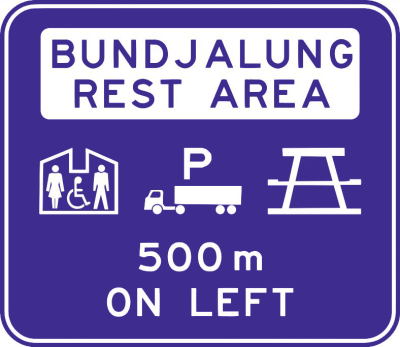Driver fatigue
Fatigue kills. Each year, it accounts for around 20% of road deaths in NSW. Here's how to avoid fatigue and be a safer driver.
What is fatigue?
Fatigue is the feeling of being sleepy, tired or exhausted. It’s your body’s way of telling you that you need to stop, and rest or sleep.
Fatigue-related crashes are twice as likely to be fatal. Drivers who are asleep cannot brake. Driver fatigue can be as dangerous as drink driving. It affects your concentration and judgement, and slows your reaction time. Research shows that being awake for about 17 hours has a similar effect on your driving as a blood alcohol concentration (BAC) of 0.05.
Fatigue can affect anyone, no matter how experienced a driver they are. Fatigue is not only a problem on long drives or at night. It can affect you on shorter, everyday trips like heading off to work in the morning, or driving home after a long day.
Groups at a higher risk of driving tired are shift workers, those who drive for work, tradies who tend to start work early, students who tend to be up late, and new parents who are sleep-deprived.
Avoiding fatigue
While there are no specific road rules to manage fatigue, when you’re driving it’s your responsibility to make sure you do not put yourself and others at risk.
Get at least 8 hours of sleep
Make sure you have a good night’s sleep. The average person needs about 8 hours each night to function normally. Teenagers need even more. When you get less hours than you need, you get a ‘sleep debt’. The only way to treat your sleep debt is by sleeping.
Wait 30 minutes after waking before driving. There’s a high risk of fatigue immediately after waking up, when you still feel tired. This is ‘sleep inertia’ and generally lasts between 15 to 30 minutes.
Avoid driving when you would normally sleep
Avoid driving at night when your body naturally wants to sleep.
The risk of having a fatal fatigue-related crash is four times greater late at night and early in the morning.
Know when it’s time to rest
You can avoid fatigue crashes by recognising the early warning signs:
- yawning
- poor concentration
- tired or sore eyes
- restlessness
- drowsiness
- slow reactions
- boredom
- feeling irritable
- making fewer and larger steering corrections
- missing road signs
- having difficulty staying in the lane.
If you show any of these signs, park in a safe place and take a break or nap.
Stop and take a nap
Sleep is the only way to overcome tiredness. As soon as you experience any of the signs of fatigue, park in a safe place and have a nap (20 minutes works best).
Do not wait for a microsleep – by then it’s too late.
A microsleep is a brief and unintended loss of consciousness. It happens when you try to stay awake while doing a monotonous task, such as driving. It can last from a few seconds to a few minutes. Signs of microsleep are:
- head snapping
- nodding
- closing your eyes for more than a couple of seconds.
A 4-second microsleep at 100km/h means you’ll drive more than 110m with your eyes off the road.
Take regular breaks
Planning ahead is the best way to avoid becoming tired. Plan to take regular breaks from driving, even if you don’t feel tired, and share the driving with a friend or family member if you can.
Watch what you eat and drink
Dehydration can cause fatigue. Some kinds of food and drink remove water from your body. Avoid alcohol, fatty foods, too much coffee and sweet soft drinks. Drink plenty of water instead.
Use rest areas where available
Rest areas (or rest stops) are places where you can park safely, get out of your vehicle and refresh yourself. They’re available 24 hours a day, every day of the year. You must not camp in rest areas, so if you need a longer rest, find a campsite, hotel or motel.
You can also take a break at a:
- petrol station
- park
- country town
- Driver Reviver site.
Driver Reviver sites operate in NSW during peak holiday travel periods. These are places to take a break during a long drive and have a free cup of tea or coffee, and a snack.
For the location and operating times of rest areas and Driver Reviver sites, visit NSW Rest Areas map.
